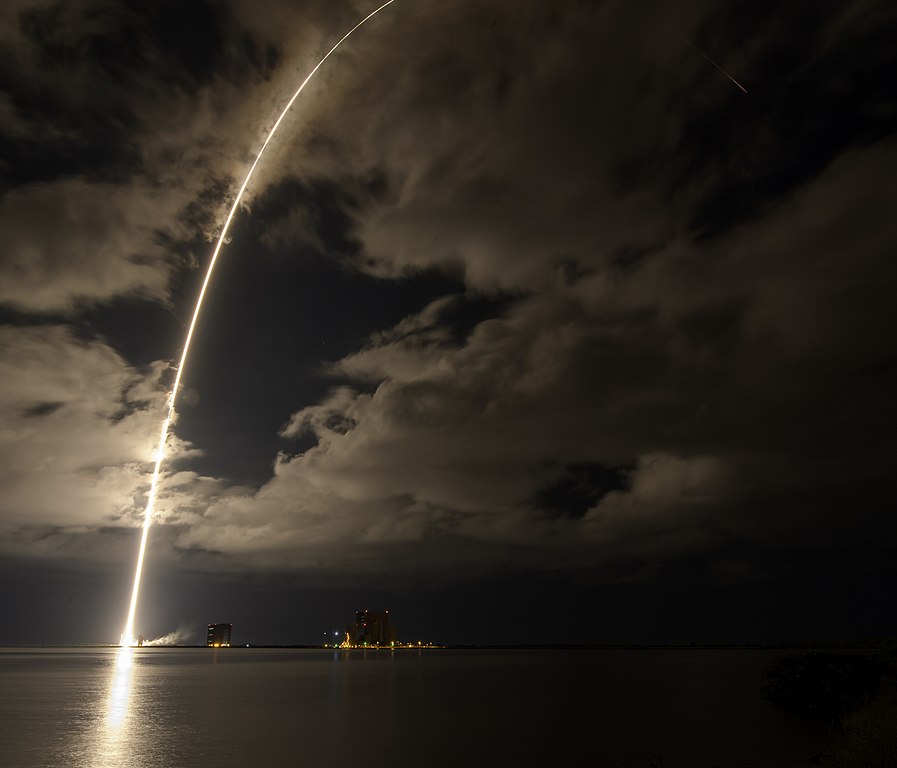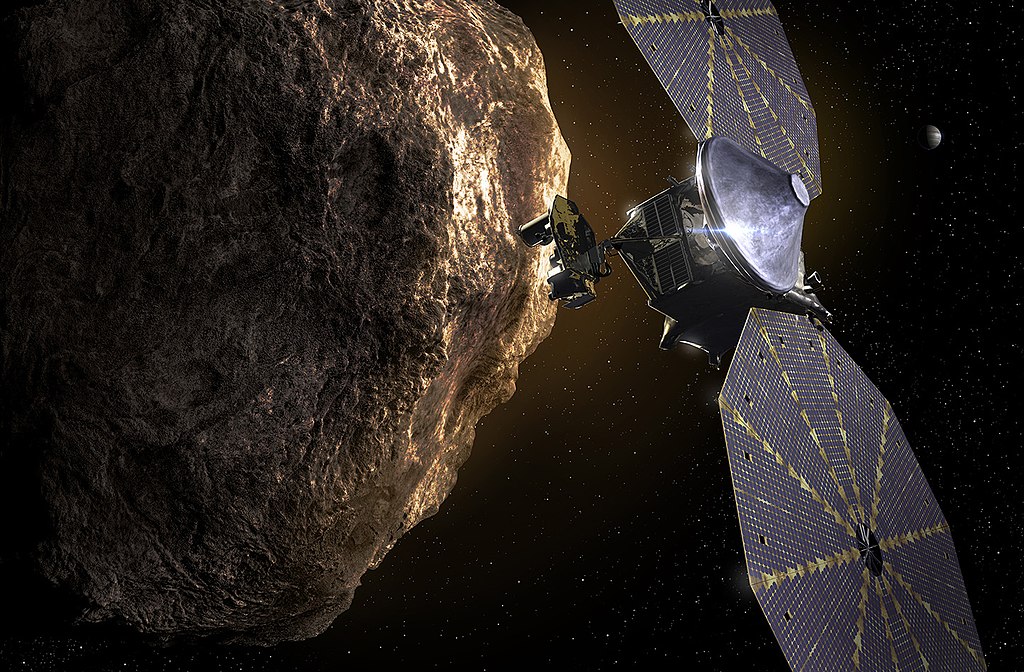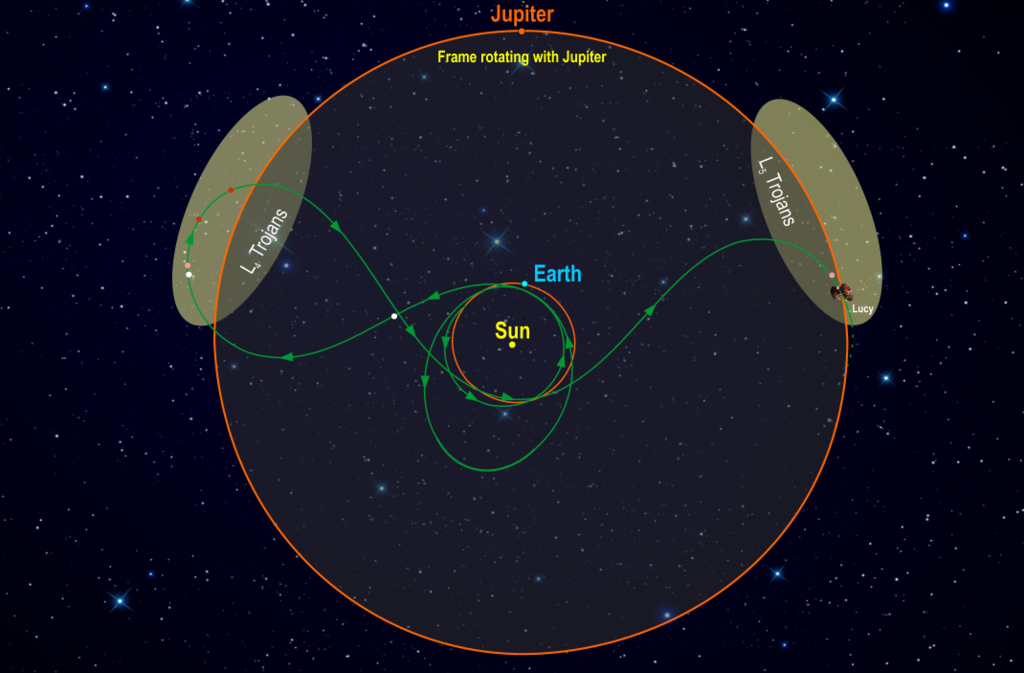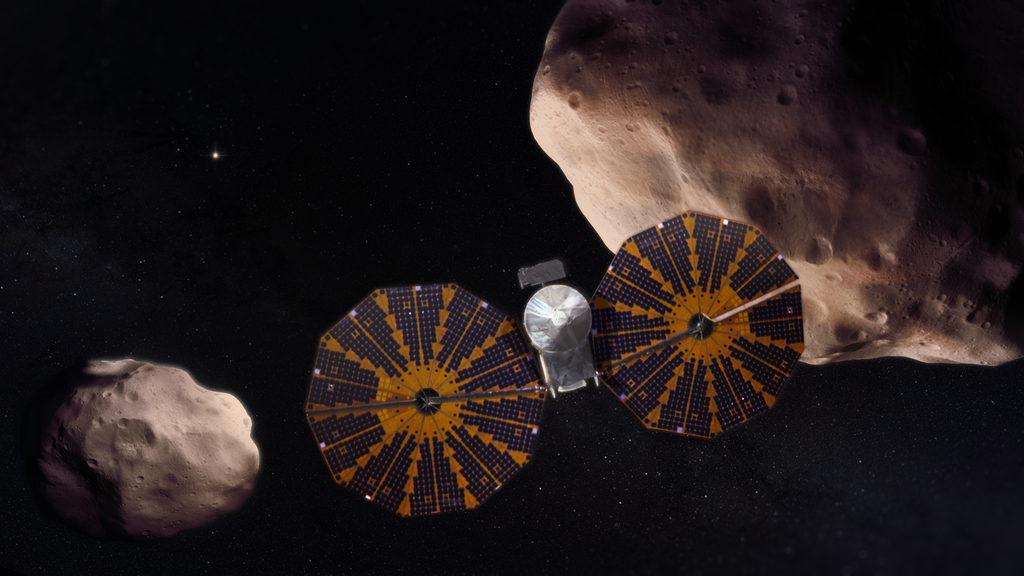On Saturday, NASA launched a special spacecraft called Lucy. Lucy will take a 12-year trip to learn more about a group of asteroids known as the Trojans. Scientists believe the asteroids will provide information on the beginning of the solar system.
Asteroids are large rock-like chunks of material that never quite formed into a planet. Most of them are found in the asteroid belt, between Mars and Jupiter. One of the asteroids that Lucy will study lies in the asteroid belt.

(Source: NASA/Bill Ingalls [Public domain], via Wikimedia Commons.)
But the other seven asteroids, known as Trojan asteroids, are in an area of space that hasn’t been visited before. Though the asteroids are very far away from Jupiter, they follow the same path that Jupiter takes around the Sun. Some travel ahead of Jupiter, others behind it.
The Lucy mission will visit more different objects in space than any other space mission.* But getting to all of these places won’t be simple. Lucy will have to circle around the Earth three times and travel out to the Trojans twice. The entire trip will be more than 4 billion miles (6.3 million kilometers) long.
![The inner Solar System, from the Sun to Jupiter. Also includes the Main Asteroid Belt and the leading and trailing Trojan asteroids. (Source: Based on image by Mdf [Public domain], via Wikimedia Commons.)](https://newsforkids.net/wp-content/uploads/2021/10/innersolarsystem-labeled-3.jpg)
(Source: Based on image by Mdf [Public domain], via Wikimedia Commons.)
In 1974, scientist Donald Johanson and one of his students discovered a 3.2 million-year-old skeleton of a human ancestor. They named the skeleton Lucy after the hit song “Lucy in the Sky with Diamonds” by the pop group The Beatles.
The current Lucy mission is named for the skeleton. The Lucy skeleton changed the way scientists understood human history. Scientists hope that studying these asteroids will help lead to similar changes in our understanding of how the solar system began around 4.5 billion years ago.

(Source: NASA/SwRI [Public domain], via Wikimedia Commons.)
“We think these asteroids are fossils of solar system formation,” says Hal Levison, the mission’s lead scientist. Lucy will study these asteroids as it flies past them, sending pictures and other information back to NASA.
The first asteroid that Lucy will fly near, in 2025, is actually named Donaldjohanson. It’s in the asteroid belt. To get there, Lucy must first go around the Earth twice. It will use the Earth’s gravity like a slingshot to send it out through the asteroid belt.

(Source: NASA [Public domain], via Wikimedia Commons.)
From there, Lucy will continue on to visit a group of five Trojan asteroids that orbit the Sun ahead of Jupiter. It will study these asteroids in 2027 and 2028.
Around 2030, it will make another return trip around Earth. It will be the first spacecraft that’s gone to the outer part of the Solar System and returned. The final trip around Earth will send it back out to the far side of the Sun by 2033 to study two Trojan asteroids that orbit the Sun behind Jupiter.

(Source: NASA/Conceptual Image Lab/Adriana Gutierrez [Public domain], via Wikimedia Commons.)
Lucy will be powered on its trip by two large, 10-sided solar panels that are 24 feet (7.3 meters) across. NASA can adjust the solar panels to get more or less energy, depending on how far away the Sun is. But the panels have to be big because Lucy is going farther from the Sun than any solar powered spacecraft has ever traveled before.
* The asteroids that Lucy will pass by in order are:
52246 Donaldjohanson
Leading Trojans: 3548 Eurybates (with its satellite), 15094 Polymele, 11351 Leucus, and 21900 Orus
Trailing Trojans: binary (double) Trojan 617 Patroclus with its satellite Menoetius.
Did You Know…?
In November another spacecraft, named Dart, will slam into an asteroid to see if it can change the asteroid’s path. Scientists want to test the idea in case they ever need to change the path of an asteroid headed toward Earth. Dart will hit an asteroid that’s 6.8 million miles (11 million kilometers) away from Earth.
